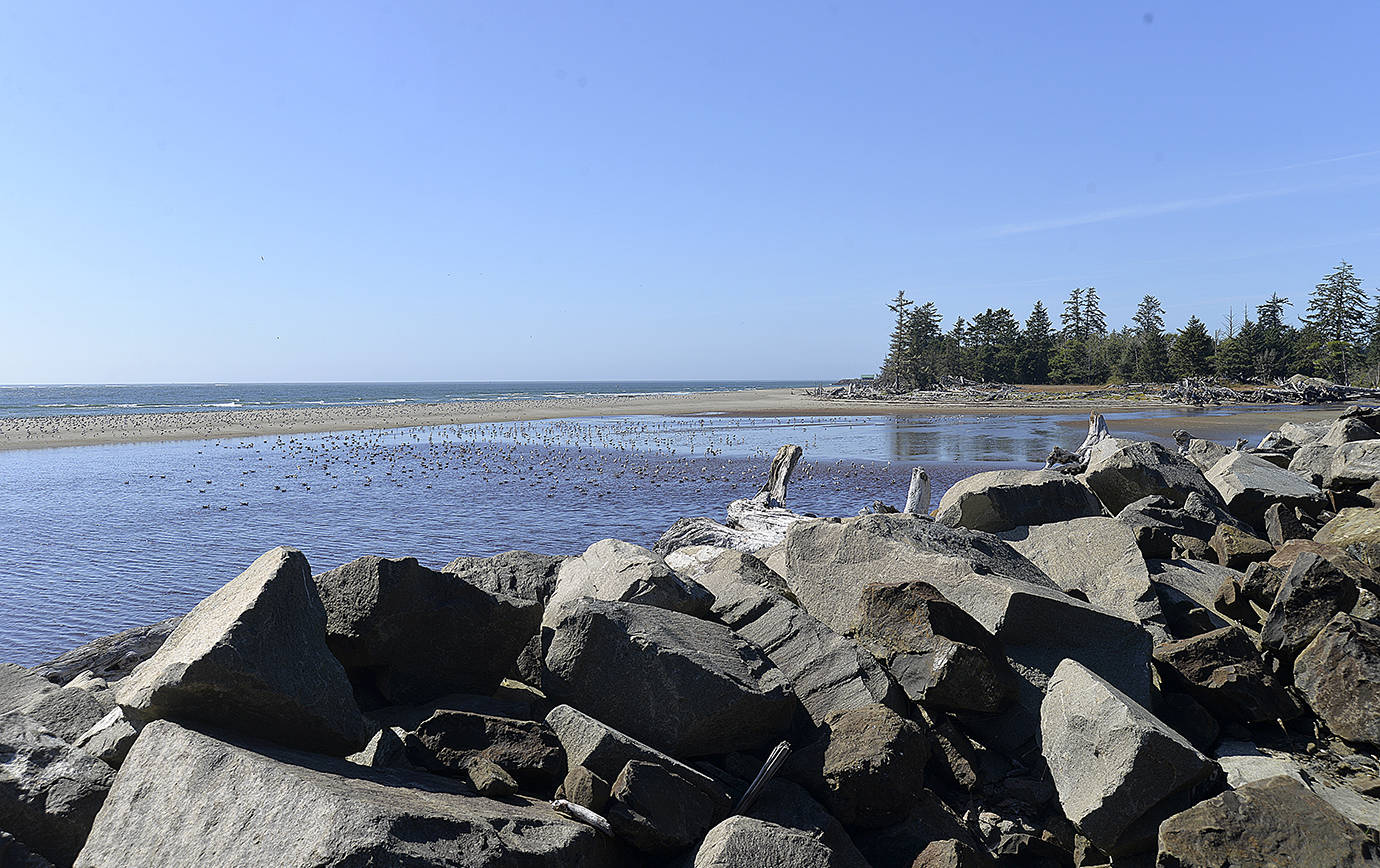Rock and timbers are being stockpiled along State Route 105 in the North Cove area of Pacific County as a group of residents and the drainage district chairman continue their fight to slow the seawater erosion that has cost the area nicknamed “Washaway Beach” several homes and hundreds of feet of shoreline over the decades.
About 20 locals were updated by Grayland drainage district chairman David Cottrell and Washaway No More chairwoman Connie Allen Sept. 3 at the end of Old State Route 105. They, along with North Willapa Grange master Clare Conlan and the members of the Grange, have been pivotal in organizing the recent efforts to stave off erosion, and they say they have already seen positive results of their work.
Allen explained the rock is coming from two local pits; the group purchases the cheapest rock it can get. The group has been stockpiling rock southeast of Old State Route 105, near the irrigation channel mouth, and at the corner of Whipple Avenue and Spruce Street to the north. It costs about $1,000 to purchase rock to cover “one road end,” where streets have been washed away, said Allen.
The rock is primarily cobble, 2.5 to 10 inches in diameter. It is placed along eroding shorelines near vegetation edges, sometimes mixed with larger rock. As Cottrell describes it, waves crash into the cobble, which diffuses the impact of those waves, taking the energy out of them. During storm events, he said you can actually hear the cobble rattle as it diffuses the energy of the winter surf.
Wood is also used in areas of the beach where practical. A pile is forming near the irrigation ditch, much of it large driftwood that tends to congregate in the area naturally. Some of it is scrap wood Cottrell has secured from local construction sites and anyone else who may have wood that would just be burned or otherwise destroyed.
In the winter of 2007, a massive storm stripped away a lot of the sand that remained in the area. This year, Cottrell has noticed a large amount of sand forming along this stretch of beach. Just why is up for debate, but Cottrell has his favorite theory.
“Everyone has their own theory, but really there are always 10 things happening at once,” he said. “My theory is that after World War II they were doing a lot of building around Warrenton, which was all open dunes. They planted vegetation, and that trapped the sand and didn’t let it come down here. After the 2007 storm its 130 mph winds shoved the sand up and all the spits disappeared for years.”
That sand, free to move again, has been building up in recent years and is producing another large spit “that was never there before,” said Cottrell. Over the next few years that sand was coaxed by northwest winds to track back to North Cove. The natural depositing of sand helps with shoreline protection efforts, said Cottrell, and adding the rock and timber to it can further protect remaining homes and property and ease flood concerns. The influx of sand is noticeable at the mouth of the irrigation ditch, where a new spit has formed a lagoon used by sea birds of all kinds.
Work on the project is ongoing. The first phase of the project will cover the shoreline along the base of the vegetation line from the spit just south of Old State Route 105 to north of Blue Pacific Drive, about two miles altogether. Eventually the project will extend to include another half mile or so from Blue Pacific north to the Warrenton Cannery Road. Permits have already been secured to Tamarack Street, about a mile and a half north of the irrigation ditch mouth and permits are in the works for the areas north toward Warrenton Cannery Road.
The collaborative nature of the project, with community members coming together and able to secure funding and do some of the dirty work on their own, has gained national attention, said Allen, with national television news outlets expressing interest in the story. Also attracting attention is how natural the protected shoreline appears, said Allen; no concrete walls, all natural material is used.
A lot of that funding, $650,000, came from the state’s last budget process. Pacific County County Commissioner Lisa Ayers applied for that grant, which provided money to study the area and come up with a test proposal. The boots-on-the-ground money came from state shellfish restoration money, secured in large part through the efforts of Rep. Brian Blake (D-Aberdeen), said Allen. That money, a little more than $600,000, can be used to purchase and place rock, pay for labor and, importantly, according to Cottrell, monitor the beach to test the effectiveness of shoreline preservation efforts.
Keep up with the ongoing efforts on North Cove by following Washaway No More on Facebook.


